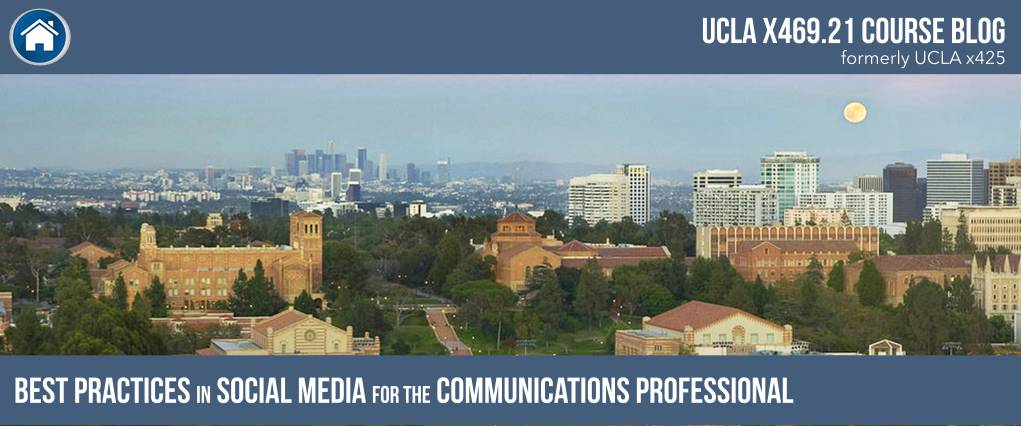
Week 1: A Conversation with Clint Schaff by Stephanie Colman
By UCLA X469.21 Student Stephanie Colman
Powered by the People!
Clint Schaff, vice president of strategy and development at the Los Angeles Times, energetically kicked-off the Spring 2021 session of UCLA X469.21 with a look at the people-powered nature of social media and the importance of a social media playbook.
Schaff stressed the wealth of opportunity found in social media’s non-linear storytelling, noting the importance of setting objectives to drive focus and flow while acknowledging and embracing the magic often discovered in the outcomes. A social media tag can prompt others to share and expand opportunities, lead to new relationships, launch a “Yes, and…” conversation and so much more. In other words, social media allows people to engage with content in ways that simply aren’t possible with traditional media.
Schaff explained further how social media is about engaging with the audience; it’s
interacting with, not talking at. If all you’re doing is talking, you’re missing the chance to listen, support, energize and embrace – all ways to leverage social media to help meet overall sales/marketing/PR objectives.
It’s tempting to jump on the bandwagon of the latest shiny object, but Schaff explained that savvy practitioners will post with a mindfulness of Charlene Li’s “POST” approach — a clever acronym designed to keep People (who you’re trying to reach) at the forefront, followed by Objectives (overall goals), Strategies (how you’ll get there) and finally – Tactics/Technologies.
While there’s often magic in the outcomes, it doesn’t happen without a well-developed strategy. Schaff champions a proactive approach with the social media playbook. Developing a playbook minimizes risks and maximizes opportunities by challenging the practitioner to think ahead – especially about what could go wrong – in order to set clear guidelines to help prevent social media missteps.
Schaff’s approach to developing a social media playbook includes:
- Defining objectives.
- Determining strategies and deciding how content will be allocated between the
strategies. Don’t forget to check routinely to see how different types of posts perform –
allocations may need to change. - Developing a content calendar. Mapping out content in advance makes one less
likely to make mistakes and frees up time to respond to unexpected opportunities. - Staying open to unexpected opportunities – even when they’re not part of the pre-
defined objectives. Make room for the magic!

